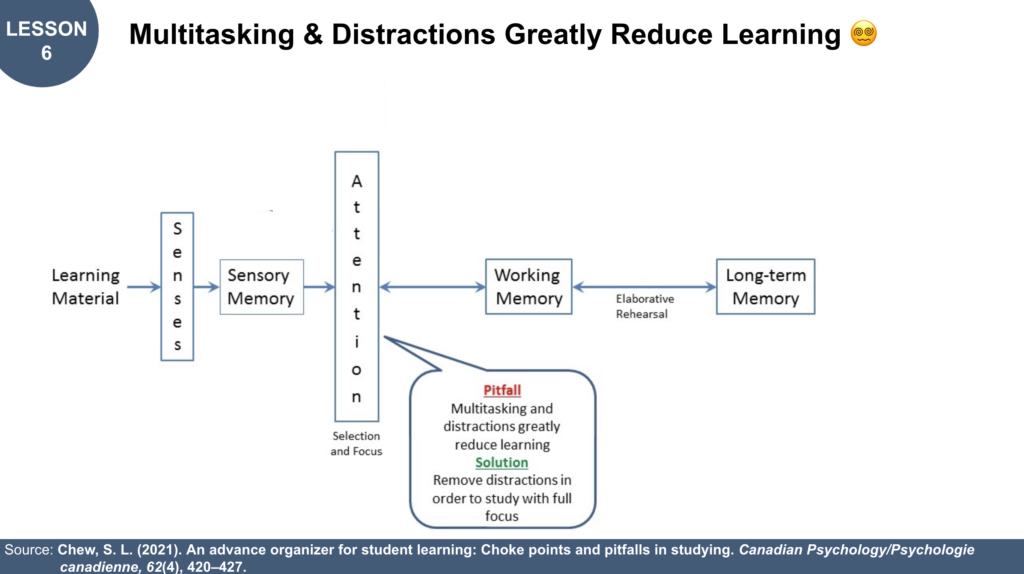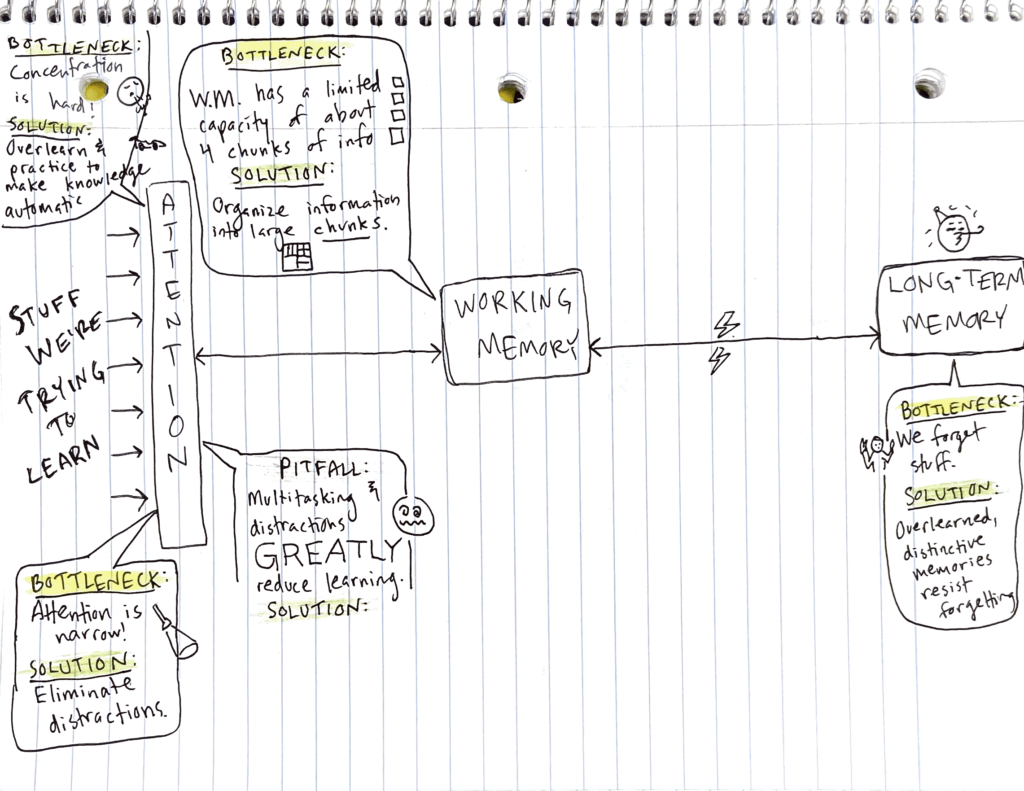Hey there, colleague! What follows is a mini-lesson that teaches secondary students how to learn more effectively. It's part of a series, which you can access right here. When we teach students about learning, we empower them to work smarter and get better results for their effort. This is massively important for cultivating the five key beliefs beneath student motivation.
Without further ado — here's today's post! -DSJR

All right — now we get into the fun stuff with learning! What are the most common ways that students make learning a lot harder and longer and more tedious than it needs to be?
These are what Dr. Chew calls Pitfalls — common traps students fall into when they are trying to learn things.
If you and I can avoid these pitfalls, we place ourselves into the top echelons of strategic learners. We increase our ability to succeed in and out of school while still having a life. And we get to have FUN because learning is FUN.
So, let's get out our notes, and let's get our first pitfall started. Just like with our bottlenecks, leave space for solutions to each of the pitfalls we look at this week, okay?
Pitfall #1: Multitasking and distractions GREATLY reduce learning.

Now, a couple things here — one, check out those all caps for GREATLY, make sure you add those. Modern humans insanely underestimate the degree to which distractions harm their learning. Insanely, ya'll. But not us — because, we use those all caps on GREATLY.
One other thing — I've got the squiggly eye emoji there because this pitfall is THE best recipe for driving yourself nuts while trying to learn.
Two quick questions:
- What's an example of multitasking when you're trying to study? Switching between tabs from one subject to another — yes. Playing a YouTube video on your computer while self-quizzing with Quizlet on your phone — yes. Actively texting with your friend while doing a homework assignment for math — yes. Guess what the solution to this one is? Single-task.
- What's an example of a distraction you face when you're trying to study? Yep, we already did this last week, but let's do it again. Phone. Video games. Friends. Siblings. Yeah, right. Remember the solution to that one? Eliminate distractions. Good.
Let's add those solutions in on our diagram:

Now notice that word I used at the start — what word?
Aggressively — yes. I want you to start thinking about learning a little more like an athlete, a little more like a gamer, a little more like someone who WANTS something, okay? Because listen — you DO want to learn. Your mind and body and heart and soul WANT to learn. Do you hear me? You do. We do. We all do. Learning expands us and is beautiful and fun and enriching. You don't lose when you learn.
So back when I was a young and exceptionally strapping lad, I was a little wimpy on the soccer field — I know, shocking, but it's true. I'd hold back. I'd shy away from the ball.
And I remember one day my coach saying for the hundredth time, “Dave — be aggressive. Get in there. Go for it.”
And for whatever reason, that day it clicked. And I inserted myself into contests for the ball, and I had my way with things a little bit. I got a few steals. I advanced the ball up field.
And that really taught me something — as much in my head as in my body, it taught me that there's a time where it feels REALLY good to be aggressive, to be assertive, to just GO FOR IT.
That's the solution to this most common of pitfalls — GO FOR single-tasking.
- When you're studying, just study. Set a timer for 25 minutes and for that 25 minutes you look at no other tabs, you chuck that phone right out the door, you put in some earbuds and you Just. Focus. On. Learning. Just one subject. Just one lesson. Whatever it is — ONLY that.
- After that timer goes off, guess what? Go do something else if you want. That's fine. But when you're studying? JUST study.
- Get yourself a hideout. When I was in college, this was the oldest, mustiest libraries I could find — I'd go there to study because my dorm was too lively to ever focus in. Too many distractions. In your house, it might be your bedroom. Or it might be a closet. I've literally had students who study in the closet because it's the best hideout they can get in their living arrangement. It might be my classroom after school — if you want to set that up with me, I'm HAPPY to have students use my room as a quiet study space after school.
Okay — tomorrow, our next pitfall and solution.
Note from Dave: This article is part of a series of mini-lessons designed to improve student motivation by cultivating the Effort and Efficacy beliefs. More on the series here; more on the idea of the five key beliefs here.

Leave a Reply